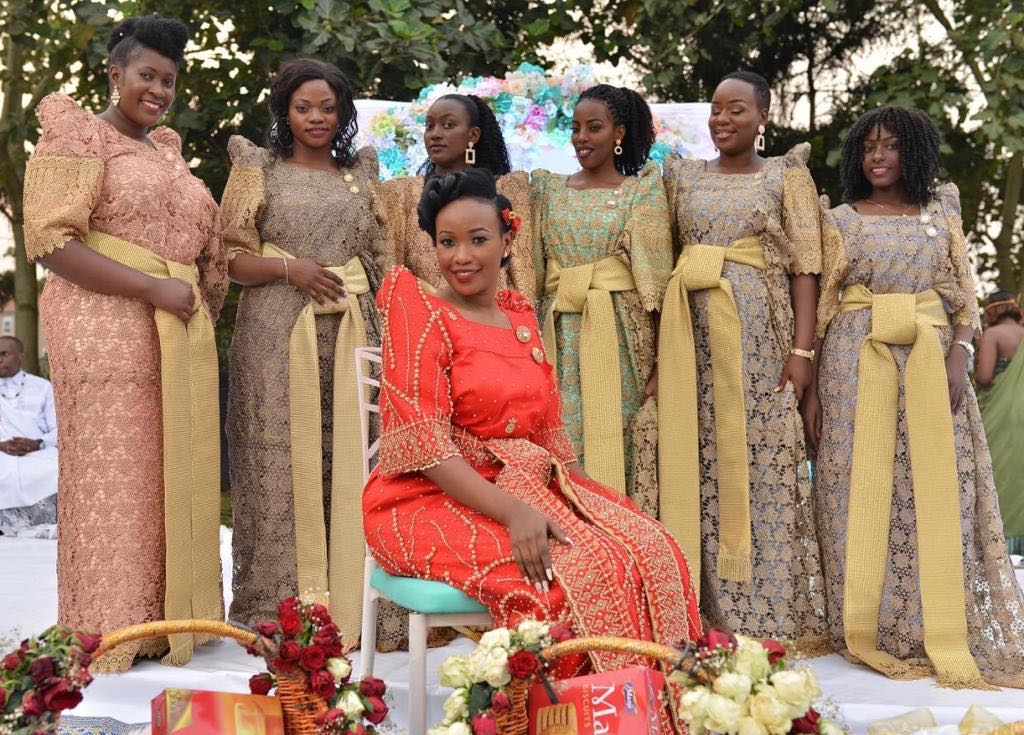Uganda is endowed with 52 tribes with different African languages; English is the official language of the country while others include Luganda, Lusoga, Bari, Runyankore, and Rutooro. Because of this diversity, there is no distinct traditional attire. Every tribe dresses in a distinct manner that distinguishes them.
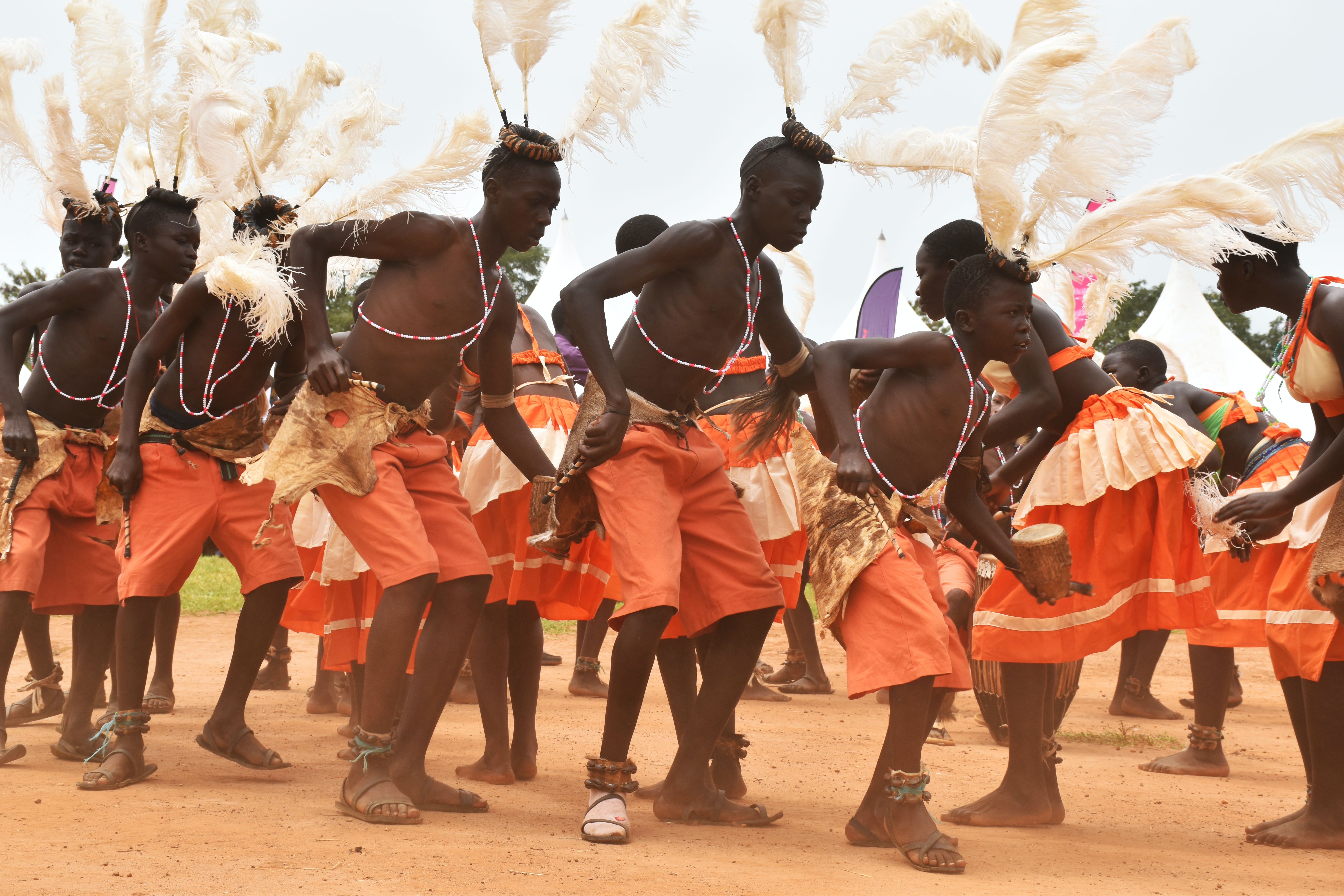
Every culture has a sense of pride that people connect with, and Uganda’s fashion sector is one of the most intriguing. With such a diverse cultural profile, Uganda has characteristic clothing for each tribe.
These traditional/special garments are typically won during traditional rituals such as coronation celebrations, introduction ceremonies, weddings, and many more where casual clothing is inappropriate.
Popular traditional Ugandan garments
There are many different types of garments, and the fabric used to make the garment plays an important influence in its design. We will describe these outfits by their names, and how and when to wear them.
Gomesi/Busuuti
A gomesi, also known as a busuuti, is a colorful floor-length dress. It is the most frequent female attire in Uganda.
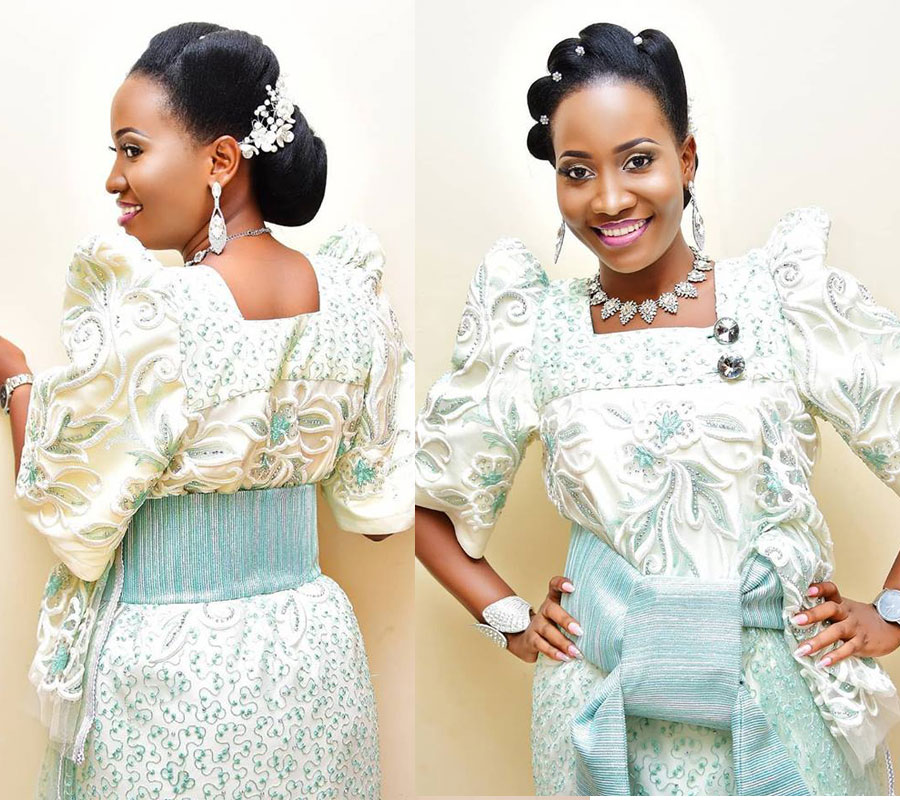
Gomesi’s origins are traced back to 1905. Caetano Gomes, a Goan designer, introduced the clothing while living in Uganda, which was a British Protectorate at the time. It was not widely worn until the wife of Daudi Cwa who was the Kabaka at the time wore it during the husband’s coronation.
The gomesi has a square neckline and short, puffed sleeves and is brightly colored. The dress is knotted with a sash that is positioned below the waist and across the hips. Two buttons are put on the left side of the neckline of the gomesi. The majority of gomesi is made of silk, cotton, or linen cloth, with silk being the most expensive of the three.
Suuti
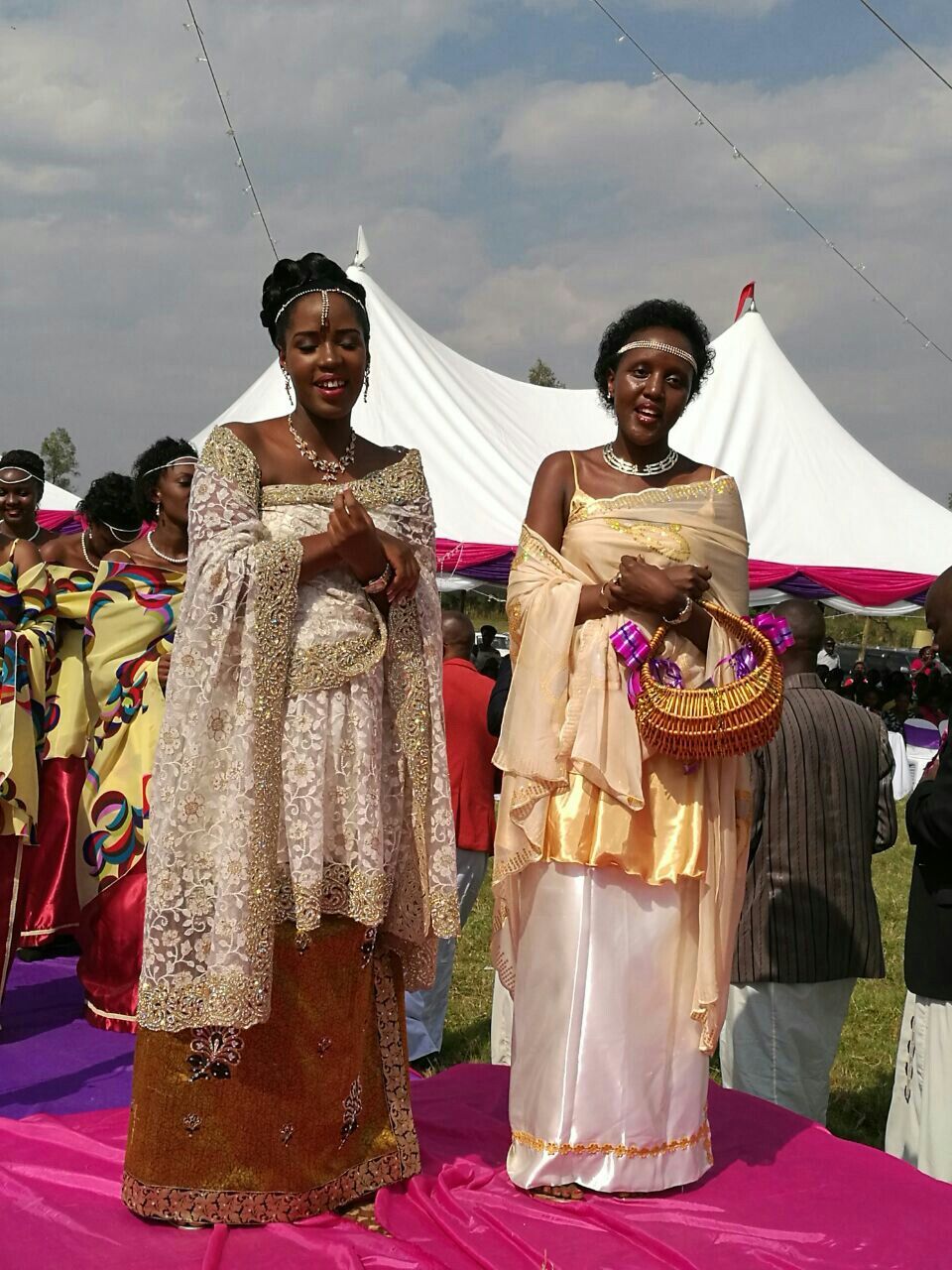
Suuti is a traditional attire worn mostly by women in western Uganda. It is made up of three pieces: a kikoy, a short-sleeved dress, and a shawl to cover the shoulders. This garment is worn differently by different tribes; some may hang it across one shoulder, while others will drape it into the armpits on one end and above the shoulder on the other.
Omushunana
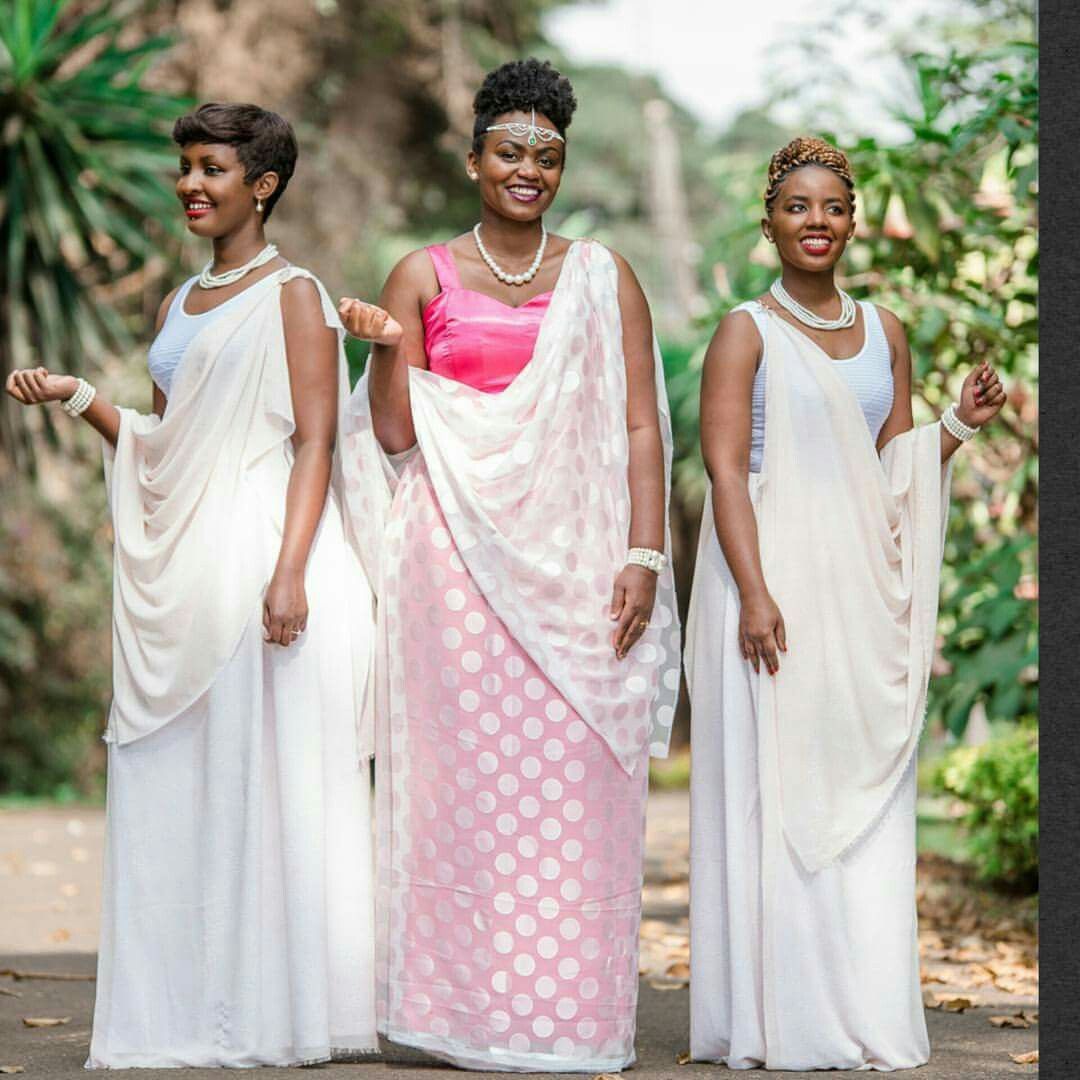
The Omushunana is another female garment with Rwandan origins that is widely popular in western Uganda. Omushunana is similar to Suuti but has a much softer fabric.
Kanzu
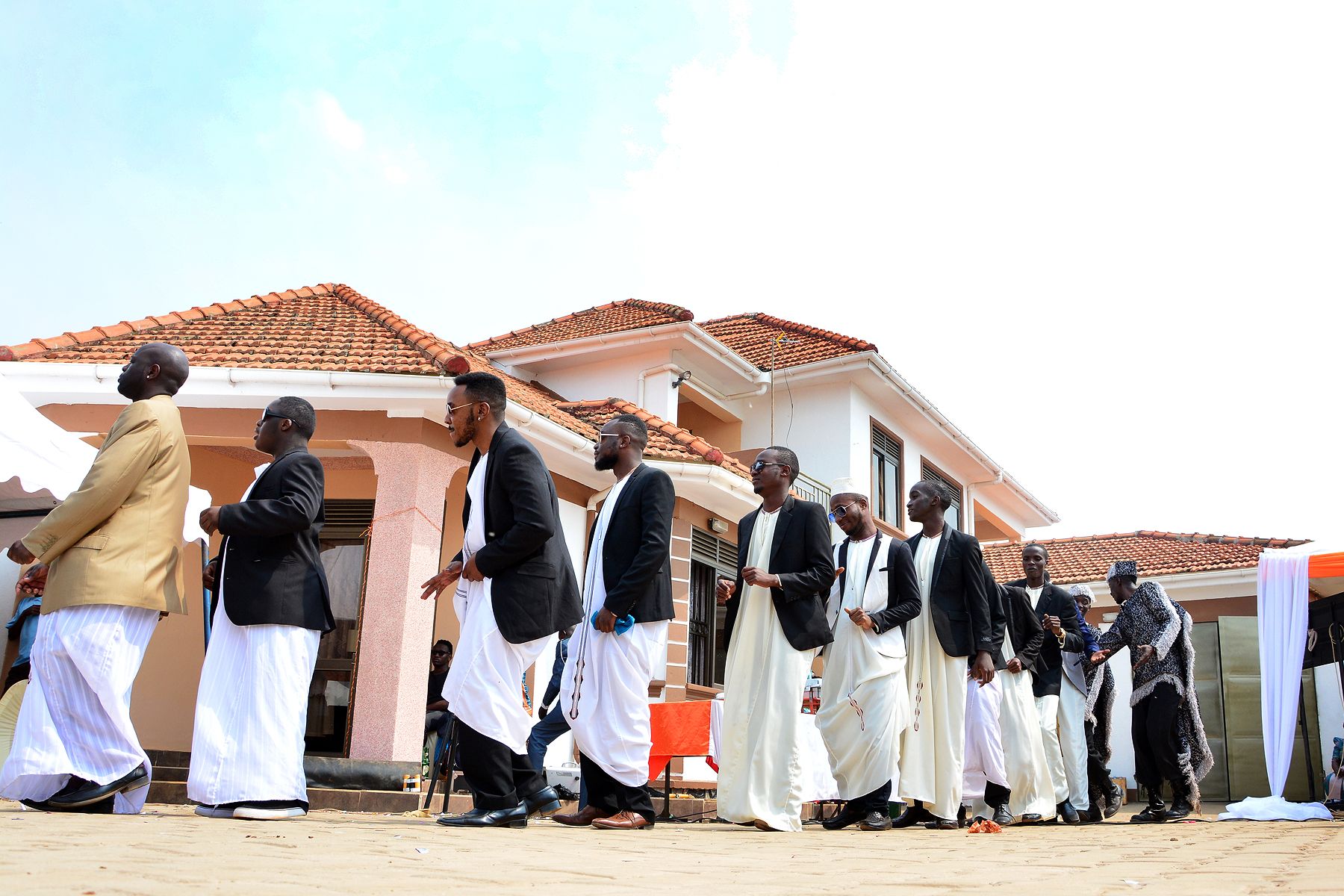
Arab traders brought the kanzu to the Buganda Kingdom. Kabaka Ssuuna was Buganda’s first Kabaka to wear the kanzu. Following the Kabaka’s adoption of the dress, it became the official costume of all Buganda males. The kanzu, later on, extended from the Buganda people to other nationalities.
The kanzu is worn during introduction (Kwanjula) ceremonies. During the Kwanjula, the groom’s family must arrive dressed in a kanzu and deliver a kanzu to the bride’s family. To complete the look, a pair of pants or shorts are worn beneath the Kanzu and a coat. Its design distinguishes it from the Kanzu worn by Muslims.
Kikoyi
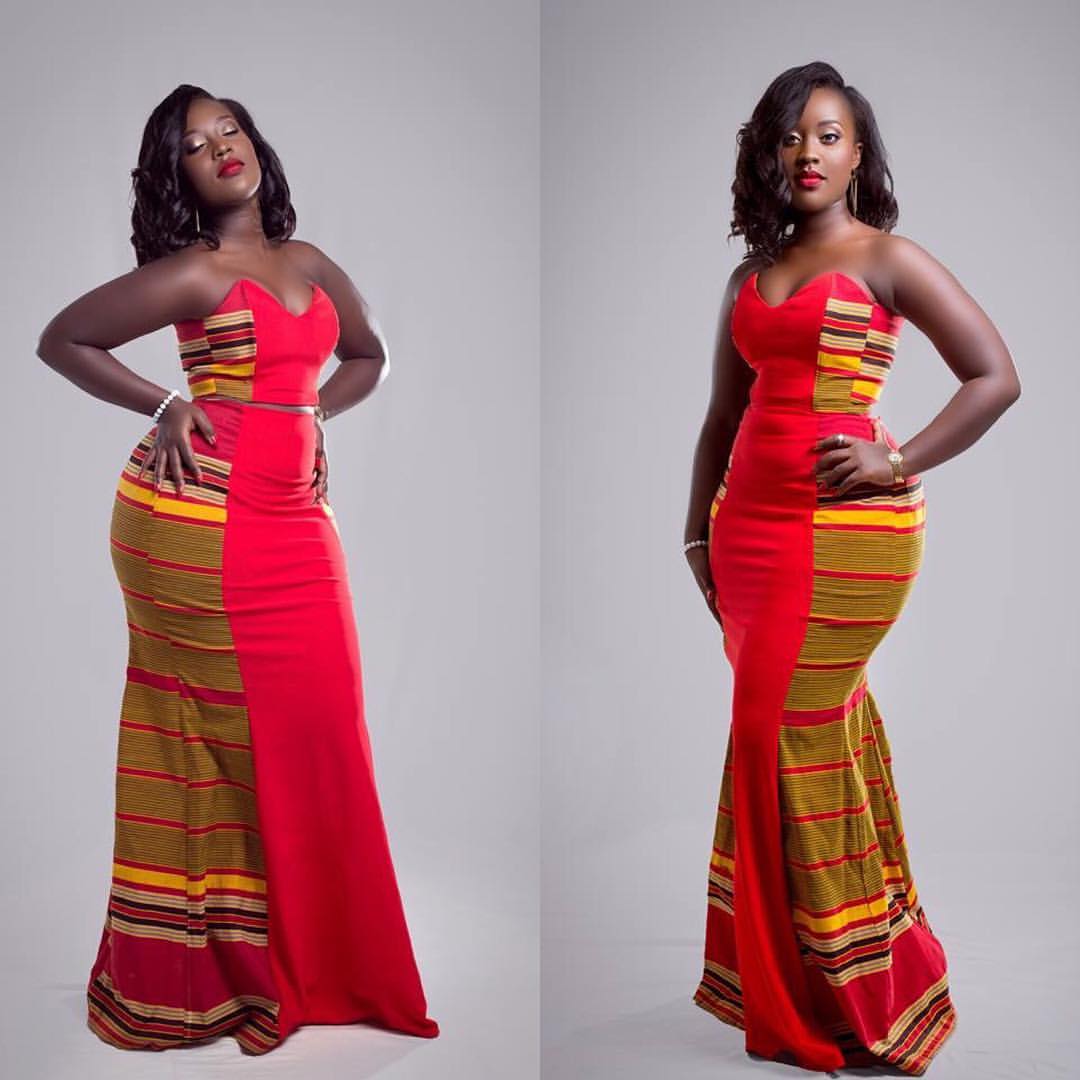
The Kikoyi is a piece of cloth that is usually stripped and has many colors, the major one being red, with threads hanging on the edges. Different colors, materials, and styles of kikoyi have recently been developed, however, the original one remains the most attractive Kikoyi. It is worn as a single attire in many forms, most notably as a Gomesi without sleeves.
Grass Skirts

They are women’s traditional dancing outfits. They are won when performing Kiganda and Kisoga dances and resemble strings of grass blades sewed together.
Where Can I buy Ugandan Traditional Wear?
The Ugandan traditional attires may be purchased at chosen stores in Kampala and a few other places. However, unlike other types of clothing, for traditional attire, you usually have to buy the fabric of your choice and have a tailor customize it for you.
Why Should Traditional Clothes Be Handled with Care?
They are a sign of modesty
The majority of traditional civilizations are particularly concerned about remaining modestly clothed. According to most customs and beliefs, every culture gives the most modest clothing to wear.
They Preserve National Identity
Traditional clothing is essentially a mark of affiliation to the nation. Wearing traditional clothing symbolizes national identity and affection for one’s country.
They Preserve Tradition
Traditional clothing is ideal to wear for comfort, especially at important traditional events and festivals. Even though they are hard to wear in the current modern world, they remain a sign of tradition.
How To Handle/Pack Traditional Clothing When Shifting
When packing traditional clothing, it’s also important to pay attention to the details. This is because traditional clothing frequently has elaborate designs and unusual patterns that need careful folding and preservation to keep the features that distinguish them from other clothes. They might feature ruffles, inlaid jewelry, or color patterns that need extra care.
To help in handling your traditional clothes, here are a few tips you can incorporate during a shift.
1. Organize all Special/Traditional Clothes
Traditional clothes are delicate thus need to be handled with care. The first step in handling them during shifting is organizing them. Organizing your special/traditional clothes will ensure they are safe and also make unpacking easier.
2. Ensure Proper Folding
Traditional wear must be folded perfectly to avoid damages. Folding your special clothes reduces the number of wrinkles and creases. Proper folding is an important aspect of an organization that greatly contributes to a successful shifting.
3. Use a Garment Box
A garment box is one of the most convenient tools for packing your traditional/special clothes during a shift. An advantage of using a garment box is that you do not have to take your special clothes from their hangers. It allows you to transfer your traditional clothes from one hanger to the next one.
4. Pack your traditional/special clothes separately.
To avoid damage, keep all your traditional/special clothes separate from your other clothing. To offer extra protection, wrap silk and other fragile materials in tissue paper.
5. Pack accessories separately.
Your traditional/special accessories should be packed separately from your clothes to minimize loss as it is easier to misplace accessories. Entangling between accessories and clothes might lead to tearing and other damages.
6. Ensure Proper Labelling
As always, properly mark moving boxes containing your special clothes. This will ensure that they are handled with caution, and it also makes unpacking after the shift easy.
7. Hire a Trusted and Professional Mover
If packing your traditional or special clothes seems like an enormous task, or if you just don’t have the time, you can always hire Nellions Moving and Relocations Company to handle it for you. Packing, moving, and unpacking are all included in our full-service relocation. You can be sure that we will handle your traditional and special clothes with utmost care.
Request for a quote.

